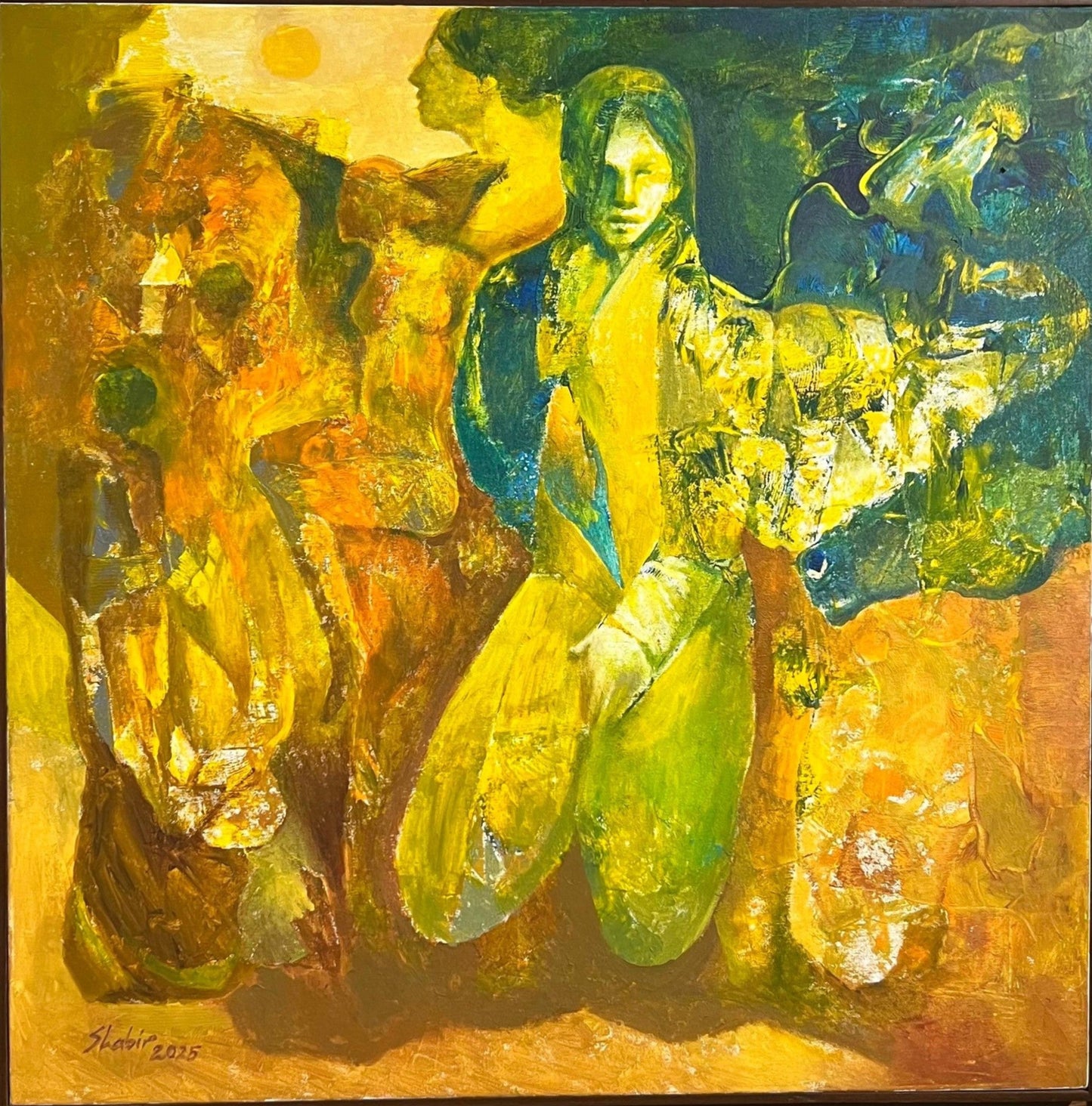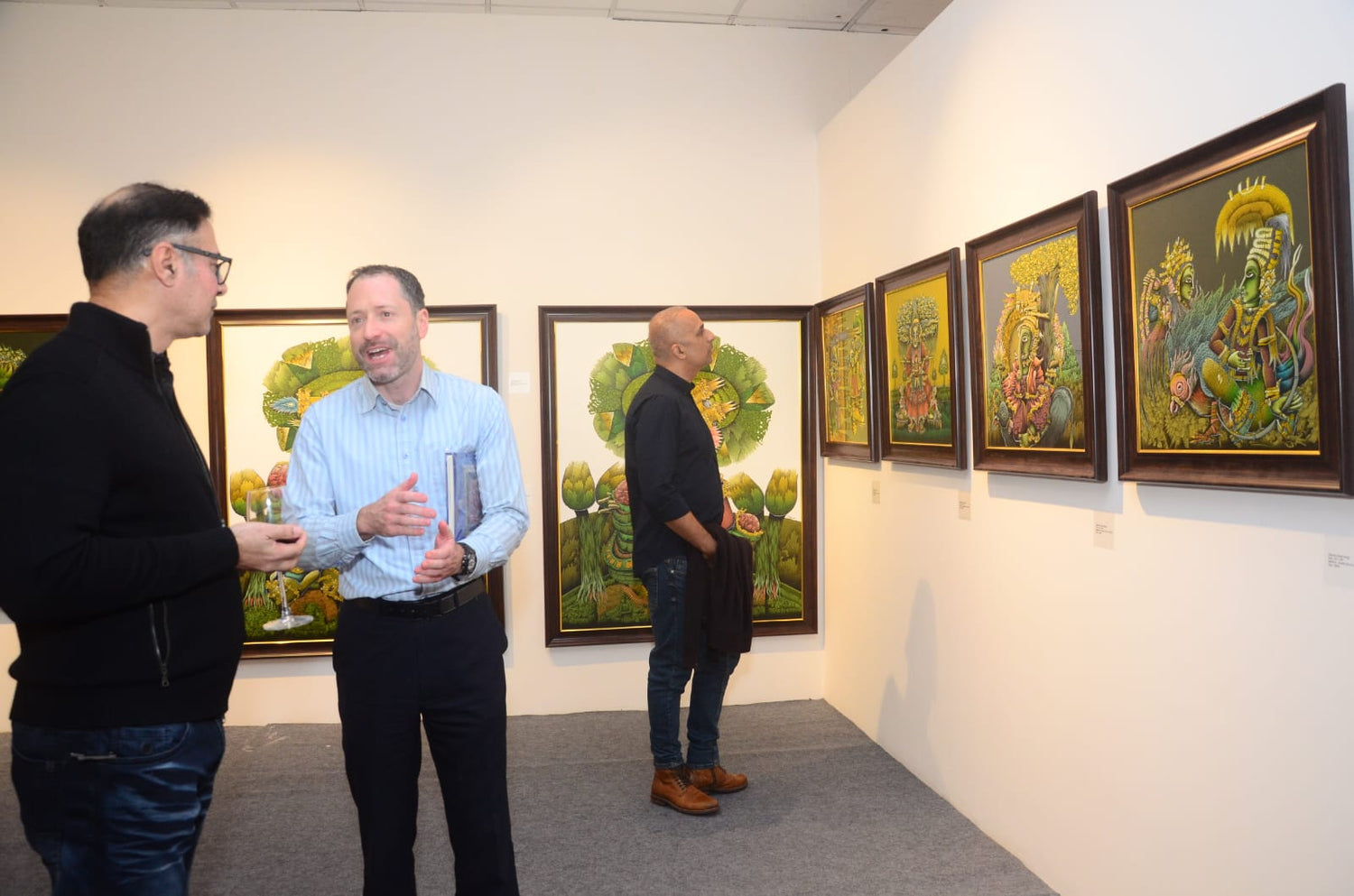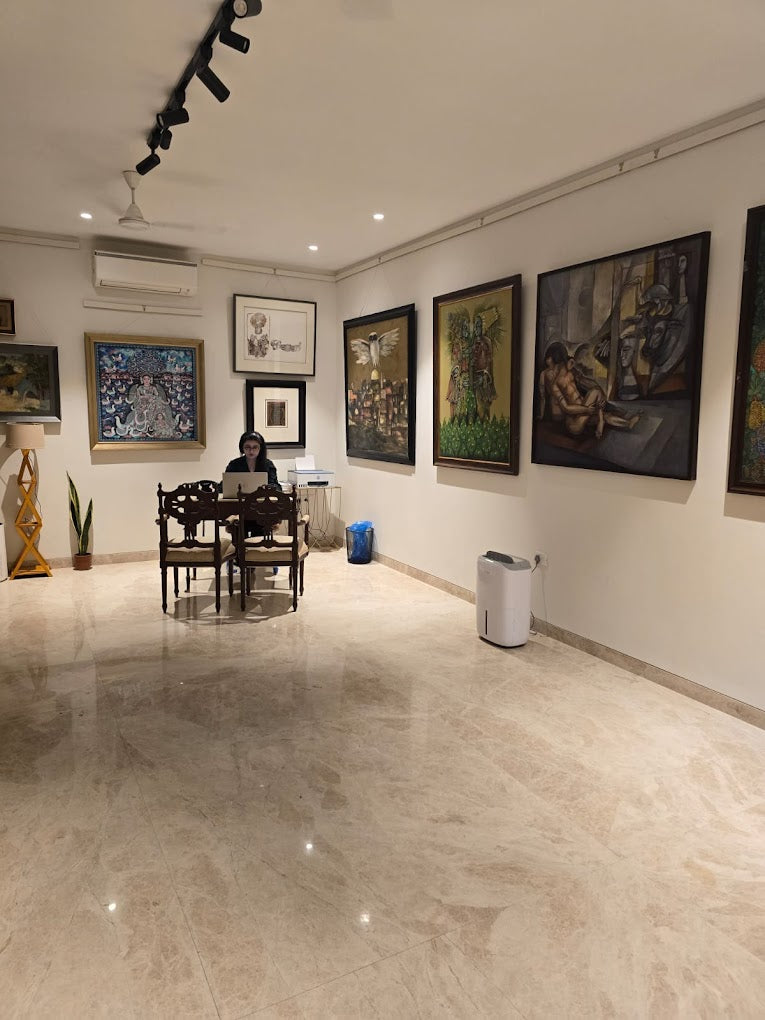Gallery Silver Scpaes
Untitled
Untitled
Couldn't load pickup availability
Artist: Shabir Hussain Santosh
Medium: Acrylic on Canvas
Size: 30 × 30 inches (76.2 × 76.2 cm)
Year: 2025
Radiating with chromatic vitality and symbolic resonance, this abstract composition by Shabir Hussain Santosh encapsulates the artist’s distinct synthesis of spiritual inquiry and formal innovation. At its core lies a luminous figure, robed in flowing hues of yellow and green, set against a swirling backdrop of earthen browns and deep, contemplative blues. The figure does not emerge with rigid clarity; instead, it is absorbed into the very rhythm of the composition, suggesting that identity, like divinity, is fluid and transcendent.
Santosh, whose practice is deeply informed by Kashmiri Shaivism and an enduring engagement with metaphysical themes, treats abstraction not as a withdrawal from the world but as an invocation of the unseen. The painting’s dynamic surface is rich with motion, figures, and forms that seem to dissolve into one another, echoing the interconnectedness of all being. Here, line and color operate as conduits of energy, guiding the viewer through a field of visual meditation.
The inclusion of gold leaf or metallic pigments, scattered with intention across the canvas, imbues the work with an ethereal glow. These radiant accents heighten the spiritual undertone, evoking sacred art traditions while simultaneously affirming the artist’s contemporary voice. A pale yellow, sun-like orb in the upper-left quadrant balances the compositional weight and bathes the scene in an almost celestial warmth, symbolizing illumination, transcendence, or perhaps the eternal cycle of rebirth. Santosh’s layering technique, merging gestural brushwork with structured overlays, creates a palimpsest of visual histories. The forms, though abstracted, carry humanistic echoes; they gesture, embrace, ascend. The viewer is invited to decipher not a narrative, but a state of being. The painting operates as both an aesthetic experience and a spiritual threshold, one where form becomes formless and meaning emerges through contemplation.
Santosh occupies a singular space, drawing from regional philosophy, Western abstraction, and personal vision to articulate a visual language that is profoundly individual yet universally resonant. This particular work stands as a testament to his ability to weave mysticism and materiality into a seamless whole. In its evocative warmth and layered complexity, the painting becomes more than image, it becomes invocation, asking not merely to be seen, but to be experienced.


Why Choose Us
Art has always, naturally, reflected the development and exploration of different thoughts and perceptions, and our current postmodern era is no different. It is interesting to see how art has evolved visually, yet the traditional methods of composing art remain a valid means of expression.
All it takes for an artist to rise above normalcy, is inspiration, which fuels his passion to paint beautiful creations throughout his life.
The valuable expression of art is always there with us, but now this expression is yet to take an interesting diversion with our art gallery, Gallery Silver Scapes, located in Hauz Khas Enclave. Art is no longer considered just decorative but has evolved and come forth as a major form of investment yielding high rates of returns for its buyers, making it an expression commonly used.

Mrs Mayor was walked into the art world by the legendary modernist Bimal Das Gupta, one of whose biggest collections remains with Gallery Silver Scapes. In the 1980s, as head and first curator of the Habiart Gallery founded by Mrs Rekha Modi — a childhood friend — Mrs Mayor worked closely with and curated shows for renowned artists such as A Ramachandran, GR Santosh, Rameshwar Broota, Sakti Burman, MK Bardhan, Dhiraj Chaudhury, M Sivanesan, and Arup Das among others.
Besides modern masters, she also worked with young contemporaries such as Sudip Roy, Paresh Maity, Subroto Kundu, Vinod Sharma, and many more. Artworks commissioned by her are now part of prestigious collections, such as those of the India Habitat Centre, Ranbaxy, Pepsi, Hotel Lalit, Bank of America, and many more private and public collections.


